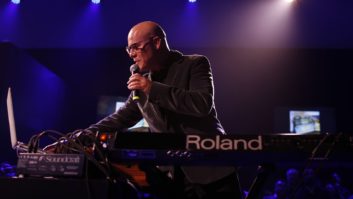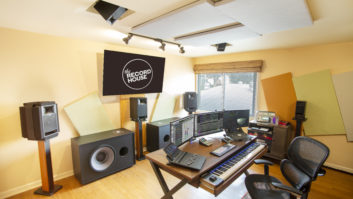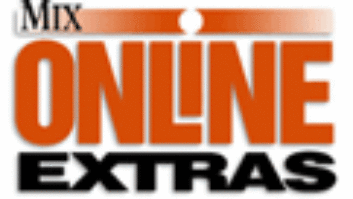BALTIMORE, MD—Thomas Dolby’s very readable new memoir, The Speed of Sound, published by Flatiron Books in mid-October, is aptly named. All punning aside, here is a man who has long been ahead of his time, rushing headlong from one project to the next, from Tin Pan Alley to Silicon Valley with occasional forays into Hollywood, a creative force on a mission to bring together art and technology.
The book, like Dolby’s life, is in two parts. We’re all familiar with his quirky songs and no less quirky videos—many of which he directed—that enjoyed heavy rotation in the early days of MTV, including “She Blinded Me with Science” and “Hyperactive.” Fans will be aware that he also collaborated with an eclectic list of artists: Lene Lovich, Whodini, Foreigner, David Bowie (with whom he performed at 1985’s Live Aid), George Clinton, Prefab Sprout and numerous others. But by the time the nineties came along, Dolby had become disillusioned with the business side of the record industry.
The second half of the book follows Dolby to San Francisco in the early 1990s where he sets up Headspace, Inc. and develops the Beatnik audio engine, a polyphonic software synth that first brought sound to web browsers. Beatnik catches the ear of Nokia and others, and before long, it’s in two-thirds of the world’s mobile phones.
Dolby’s next venture leveraged Beatnik to deliver ring tones, another technology first, programming the latest pop hits to play on handhelds. But as ring tones gave way to truetones—audio samples of the hits, and other sounds—the record labels stepped in to deal with the cell phone carriers directly and Dolby once more moved on.
Over the decades he has released a succession of genre-defying albums. Astronauts and Heretics, in 1992, was reportedly one of the first major studio albums to be completely engineered using a Macintosh home computer (he was an early adopter of Apple portables, too). Dolby has scored films and video games; he was musical director for the TED (Technology, Entertainment, Design) conferences for more than a decade, beginning in 2001; and he shot, edited and scored an award-winning short documentary, The Invisible Lighthouse. In 2014, Dolby entered the latest chapter in his storied career when he was named Johns Hopkins University’s first Homewood Professor of the Arts.
“I teach a course in music for filmmakers,” says Dolby, on the phone from Baltimore. “There have been incredible advances in digital video equipment the last few years, to the extent that our students can check out equipment that would be perfectly good enough to make their own independent feature films. But the sound aspect hasn’t really changed; these great cameras don’t have great sound. I’m here to remind them of that, and that music is a crucial piece of the filmmaker’s arsenal.”
Dolby was brought in to assist with the AV design of the school’s film center and technology incubator, located in an Art Deco cinema in the Station North neighborhood, and to perform community outreach. “Baltimore is a city that has big problems, of course, and Johns Hopkins is trying to be a good neighbor,” he says. “One of the things that I’m involved in is offering free tuition and courses to local residents that are often taught by Hopkins professors.”
Dolby’s last tour was with his film, performing the narration and soundtrack live. “Some of the shows I did with a live Foley artist, Blake Lehy, a sound designer, music supervisor and an old friend,” he recalls. “We crowdsourced some of the resources we needed. We obviously didn’t want to fill our suitcases with dead leaves and stones.”
The memoir was drawn from Dolby’s collection of handwritten journals and archive of electronic devices such as the Apple Newton. But he has no such attachment to vintage keyboards: “I don’t have the same soft spot for analog keyboards that a lot of people seem to have.”
In 2005, he converted a lifeboat into a studio, powered by solar panels and a wind turbine, at his residence in England overlooking the North Sea. “It doesn’t have reference acoustics but it’s an inspiring place to be. I don’t generally do vocals there, and I don’t have more than one or two musicians in there at a time. I’d rather go to a professional studio to do that, because I like the sense of occasion when the clock is running and you have to focus.”
It’s a modest setup in terms of gear, he continues. “I prefer the idea of hitting ‘save,’ closing the lid and feeling confident that I can get back to that point a few weeks later. I only have a couple of keyboards there: a Moog Voyager, a Virus Polar TI and a Nord 3. Pretty much everything else is software synths. The next time I go in to work, I’ll find some new toys to play with.”
Thomas Dolby
thomasdolby.com



